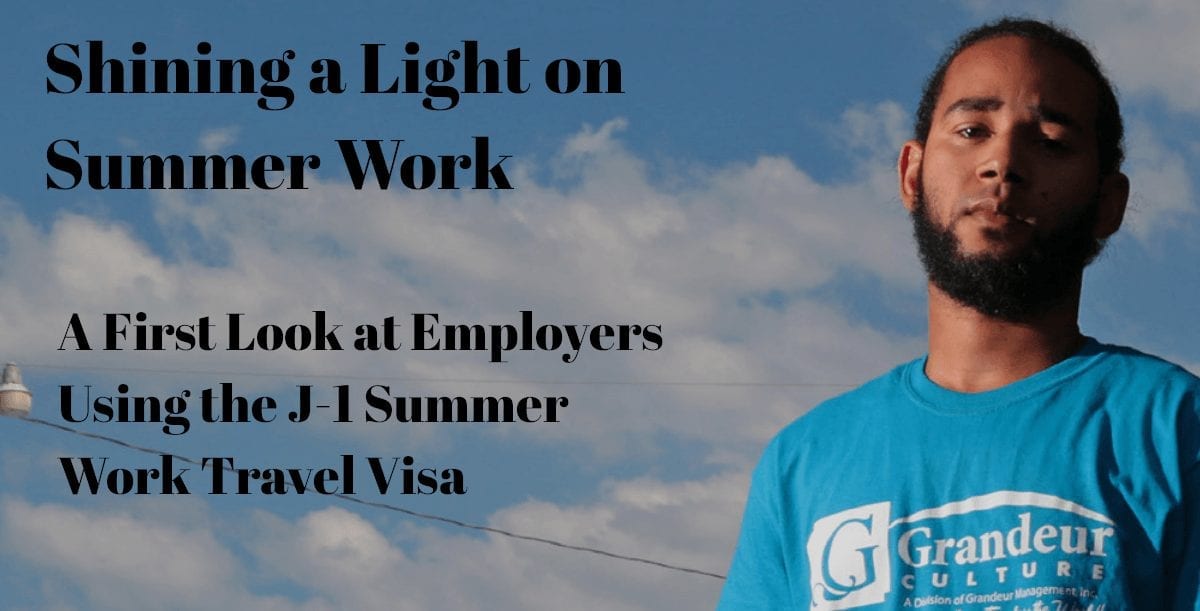
Shining A Light on Summer Work
The International Labor Recruitment Working Group released a report exploring the J-1 Exchange Visitor Program. The J-1 Exchange Visitor Program was created to enhance diplomacy and foster cultural exchange, but it has strayed far from its mission. Summer Work Travel—the largest J-1 program category, and the focus of this report—has seemingly transformed from a program designed to foster international goodwill into a source of cheap and exploitable labor. As a result, hundreds of thousands of workers arrive in the United States on J-1 visas each year without adequate protections, and countless U.S. workers who struggle to find jobs in the same industries and communities are disadvantaged. This report presents a first-ever data-informed picture of employment realities in the J-1 Summer Work Travel (SWT) program, based on analysis of data painstakingly compiled through Freedom of Information Act (FOIA) requests and other sources. In 2015, nearly 95,000 J-1 SWT workers came to the United States2 from 141 countries. Their average age was 21, and 55 percent of them were women. Despite the size of the program, the public has never had access to information about SWT employers and industries.
The SWT program is exposing young workers from around the world to unacceptable risks in the United States, including human trafficking.
- Sixty-seven J-1 visa holders self-reported to a hotline as victims of human trafficking between 2015 and 2017, according to Polar-is. This is likely the tip of the iceberg given that U.S. employers are currently not di-rectly regulated under the program.
- Six percent of J-1 SWT workers had to seek jobs after arriving in the United States, making them even more vulnerable due to lack of stable employment or income.
Read the full report here.
